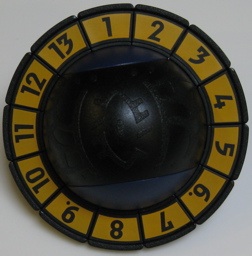
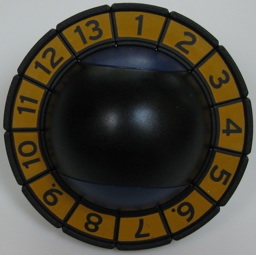
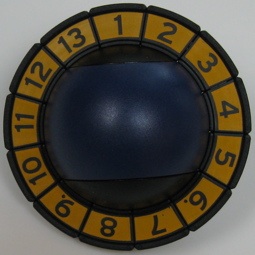
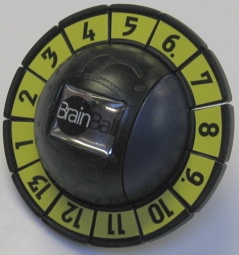
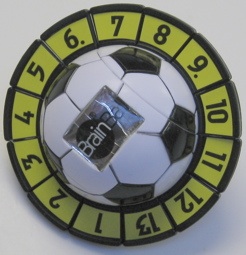
Patented by A. Unsicker 1999.
(plastic, 3.5 inches, the back side of each number is white)
Numbers are yellow on one side and white on the other, and can rotate any number of positions in either direction. In addition, there is a north pole that spans three numbers (13, 1, 2 in the photos above) and a south pole that spans four numbers (6, 7, 8, 9 in the photos above); a flip turns these 7 numbers along the pole axis:
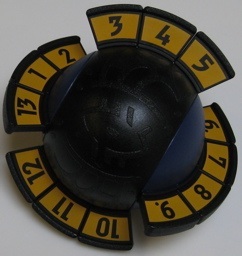 |
-> | 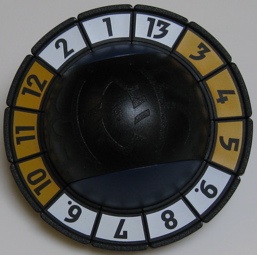 |
Solution: Use ideas from Jaap's Page (which also presents moves to speed up solving). For a positive integer n, n and -n denote clockwise and counter-clockwise rotations by n positions, and / denotes a flip. The pole position P is the center of the north pole, and the two positions to its right clockwise are Q and R.
Step 1: Make the side facing you all yellow by using as needed:
2/-2/2/-2 = flip the pole positionStep 2: From 1 to 11, move counter clockwise to its position, using:
1/-1/6/-6/-6/-6/-1 = PQR -> RPQStep 3: If 12 and 13 are reversed, change parity by changing the side facing you from yellow to white (which mixes the numbers) turn over the puzzle, and repeat Steps 1 and 2:
That is, repeatedly move the next piece to position R and use this transformation to advance it two positions towards its goal. If it is only one position away, first advance number to its right.
/5/5/ = flip all of the numbersFurther reading:
Jaap's Page, from: http://www.jaapsch.net/puzzles/brain.htm
Unsicker Patent, from: www.uspto.gov - patent no. 6,003,868